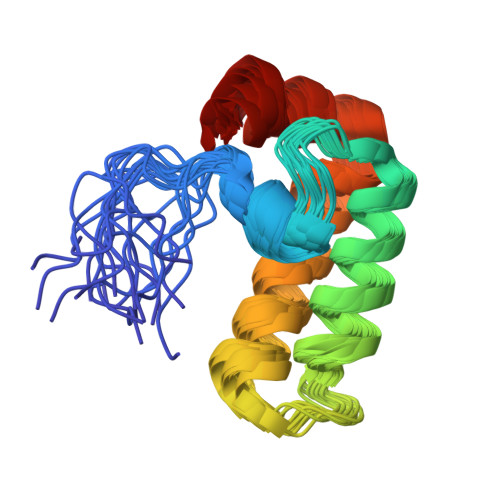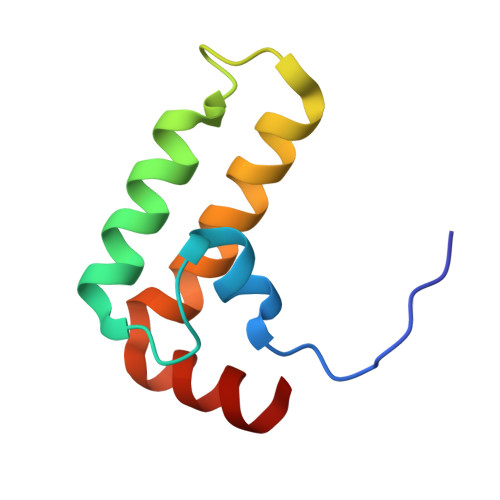Broadening the functionality of a J-protein/Hsp70 molecular chaperone system.
Schilke, B.A., Ciesielski, S.J., Ziegelhoffer, T., Kamiya, E., Tonelli, M., Lee, W., Cornilescu, G., Hines, J.K., Markley, J.L., Craig, E.A.(2017) PLoS Genet 13: e1007084-e1007084
- PubMed: 29084221
- DOI: https://doi.org/10.1371/journal.pgen.1007084
- Primary Citation of Related Structures:
5VSO - PubMed Abstract:
By binding to a multitude of polypeptide substrates, Hsp70-based molecular chaperone systems perform a range of cellular functions. All J-protein co-chaperones play the essential role, via action of their J-domains, of stimulating the ATPase activity of Hsp70, thereby stabilizing its interaction with substrate. In addition, J-proteins drive the functional diversity of Hsp70 chaperone systems through action of regions outside their J-domains. Targeting to specific locations within a cellular compartment and binding of specific substrates for delivery to Hsp70 have been identified as modes of J-protein specialization. To better understand J-protein specialization, we concentrated on Saccharomyces cerevisiae SIS1, which encodes an essential J-protein of the cytosol/nucleus. We selected suppressors that allowed cells lacking SIS1 to form colonies. Substitutions changing single residues in Ydj1, a J-protein, which, like Sis1, partners with Hsp70 Ssa1, were isolated. These gain-of-function substitutions were located at the end of the J-domain, suggesting that suppression was connected to interaction with its partner Hsp70, rather than substrate binding or subcellular localization. Reasoning that, if YDJ1 suppressors affect Ssa1 function, substitutions in Hsp70 itself might also be able to overcome the cellular requirement for Sis1, we carried out a selection for SSA1 suppressor mutations. Suppressing substitutions were isolated that altered sites in Ssa1 affecting the cycle of substrate interaction. Together, our results point to a third, additional means by which J-proteins can drive Hsp70's ability to function in a wide range of cellular processes-modulating the Hsp70-substrate interaction cycle.
Organizational Affiliation:
Department of Biochemistry, University of Wisconsin-Madison, Madison, Wisconsin, United States of America.
















